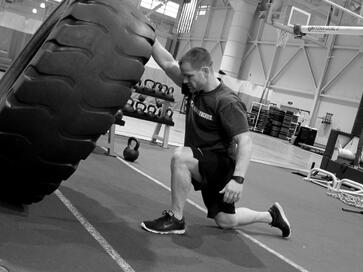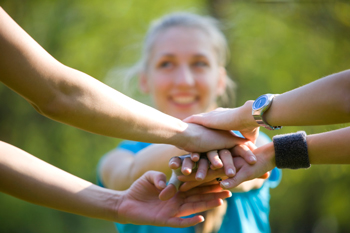It takes great commitment to set your mind on a goal and work toward it with gusto and perseverance! I love a particular quote that goes, “Everyone has the will to be a warrior, but only a warrior has the will to prepare.” The commitment it takes to train and not simply exercise is a virtue that we should all be striving for.
Your pursuit of fitness goals should be a part of your daily life and not simply once you step into the gym. That commitment and discipline it takes to make your fitness and training a priority is what will lead to the results you seek. Don't confuse motion with progress. Blindly going through the steps of a workout and not committing oneself fully to the philosophy and training method as well as “staying in the fight” with your team is motion, and not progress. You must work to train this commitment level every day!
Following are my “Prime Priorities” that I hope will help you be successful in your individual life journeys. I feel these are the top three aspects of “you” that will not only help guide your path, but help you traverse it successfully.
Prime Priority #1: Get and Keep Your Head Right
Mental toughness is a key aspect of training. This toughness should not be exclusive to fitness, but also in daily life. If this Prime is not met, you will find yourself in a defeating cycle that will eventually lead you back down the dark and unhealthy path.
- Awake each morning with a purpose and the notion that this day will be better than the last and work to make it as such.
- List the things that are most important to you and make them your top priorities.
- Surround yourself with likeminded people and remove those who are “toxic.” Create an inner circle of success, and not self-defeating
 individuals who only want to bring you back down to their level of unhappiness.
individuals who only want to bring you back down to their level of unhappiness. - Make time for you: at least 10 minutes a day with no distractions.
- Identify your “stressors” and fill your toolbox to help you be aware and combat them.
- Spend time, the most time, with those you love.
- Laugh out loud as much as possible!
Prime Priority #2: Nutrition
This aspect of your daily life is easily tied with the #1 Prime Priority. But if you don’t nail #1, the other two Primes will eventually let you down.
- Eat often, not a lot, mainly plants and animals (with thanks to author Michael Pollan).
- Protein feeds growth, and good fats are not the enemy.
- Avoid alcohol.
- Follow the 90/10 rule: 90 percent of the time you are adhering to the above; 10 percent of the time you are not. This 10 percent should be guilt free and part of a healthy, balanced life.
Prime Priority #3: Exercise
With perfect harmony between the top two Prime Priorities, this aspect of your life should be a breeze to balance, and the most fun!
- Keep it simple.
- Keep it intense.
- Lift heavy things.
- Have FUN.
Trust me, implement these Prime Priorities and you will immediately see a difference in how your day goes, and most importantly in how you view the world around you. If you concentrate on #1, the other two will follow!
Ready to make your health and fitness a priority? Start today by scheduling a fitness assessment with Tony!
This blog was written by Tony Maloney, NIFS Fitness Center Manager.

 individuals who only want to bring you back down to their level of unhappiness.
individuals who only want to bring you back down to their level of unhappiness.
 Warriors
Warriors 

